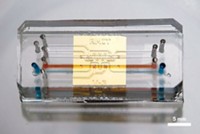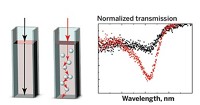Advertisement
Grab your lab coat. Let's get started
Welcome!
Welcome!
Create an account below to get 6 C&EN articles per month, receive newsletters and more - all free.
It seems this is your first time logging in online. Please enter the following information to continue.
As an ACS member you automatically get access to this site. All we need is few more details to create your reading experience.
Not you? Sign in with a different account.
Not you? Sign in with a different account.
ERROR 1
ERROR 1
ERROR 2
ERROR 2
ERROR 2
ERROR 2
ERROR 2
Password and Confirm password must match.
If you have an ACS member number, please enter it here so we can link this account to your membership. (optional)
ERROR 2
ACS values your privacy. By submitting your information, you are gaining access to C&EN and subscribing to our weekly newsletter. We use the information you provide to make your reading experience better, and we will never sell your data to third party members.
Analytical Chemistry
Magnetic Nanoparticles Help Extract Trace Molecules
Chemical Analysis: Capillary tubes coated with nanoparticles trap compounds
by Alexander Hellemans
August 14, 2012
Magnetic nanoparticles improve the ability of a common analytical technique to isolate compounds in environmental samples (Anal. Chem., DOI: 10.1021/ac301660k). This improved method could help scientists measure even low concentrations of chemicals, such as drugs in wastewater, say researchers.
Chemists use in-tube solid-phase microextraction (IT-SPME) to detect and measure the concentration of chemicals, such as herbicides and pesticides, in the environment or in food. However, because of limitations of the technique, some contaminants at very low concentrations escape detection.
In IT-SPME, a sample flows through a capillary column, which researchers have lined with a coating that binds compounds of interest. After loading the column with the sample, they wash the column with a solution that pulls the target molecules off the coating. Scientists then pass the wash through a chromatographic system to analyze the compounds of interest.
Unfortunately, the method extracts only 10 to 30% of the target compounds from a sample. For compounds at very low concentrations, inefficient extraction means that the column doesn’t retain enough of the compound for subsequent analysis steps to detect.
A team led by Pilar Campíns-Falcó of the University of Valencia, in Spain, thought it could improve the extraction yields by adding magnetic nanoparticles to the lining of the capillaries. Their inspiration came from other researchers’ work on how to isolate compounds of interest using magnetic fields. One group had demonstrated microfluidic devices that could manipulate the movement of diamagnetic molecules using applied magnetic fields (J. Chromatogr., A, DOI: 10.1016/j.chroma.2009.06.039).
The magnetic field of a diamagnetic molecule aligns with an external field, coauthor Helena Prima-Garcia explains, leading to a repulsive force between the molecule and the field. As a result, the molecules move to areas where the field is weakest.
The researchers hypothesized that, inside capillary tubes, the magnetic nanoparticles would produce small magnetic fields that would guide the movement of incoming compounds. As diamagnetic molecules flowed through the column, they would get trapped between the particles, where the magnetic fields would be weakest. As a result, the researchers expected that the adsorption rate for these molecules would increase substantially compared to the rate in capillaries with no nanoparticles. Researchers could then extract all the diamagnetic molecules trapped in the capillary and use liquid chromatography to separate and detect their target molecules.
To test the idea, the Spanish team coated the inside of a 75-µm-diameter, 17-cm-long capillary tube with a 10-µm-thick layer of a matrix containing Fe3O4 nanoparticles. They then injected solutions of widely used drugs that are diamagnetic: the painkillers aspirin, acetaminophen, diclofenac, and ibuprofen; and the blood pressure drug atenolol. As they applied a sample to the column, they magnetized the nanoparticles using a magnetic coil surrounding the capillary that produced a 150 gauss field. After loading the samples, the team washed the columns with a mix of water and methanol, while reversing the applied magnetic field. They then analyzed the solution flowing off the capillary using standard liquid chromatography.
With the magnetic particles, the capillaries extracted between 70 and 100% of the drugs. This better extraction resulted in improved detection limits, ranging from 1.7 to 5 ppb, or between 60 and 100 times better than those of the classical IT-SPME method. The extraction efficiency is greatest for planar molecules like diclofenac, says Prima-Garcia.
Eva Vitová at the Brno University of Technology, in the Czech Republic, is excited about the magnetic technique’s extraction efficiencies. She analyzes contaminants in food and says that this improved method would help her and her team detect chemicals at levels they were unable to before.
Prima-Garcia says the method also could help scientists spot pharmaceuticals in wastewater. Two companies want to commercialize the team’s methodology, she says.





Join the conversation
Contact the reporter
Submit a Letter to the Editor for publication
Engage with us on Twitter